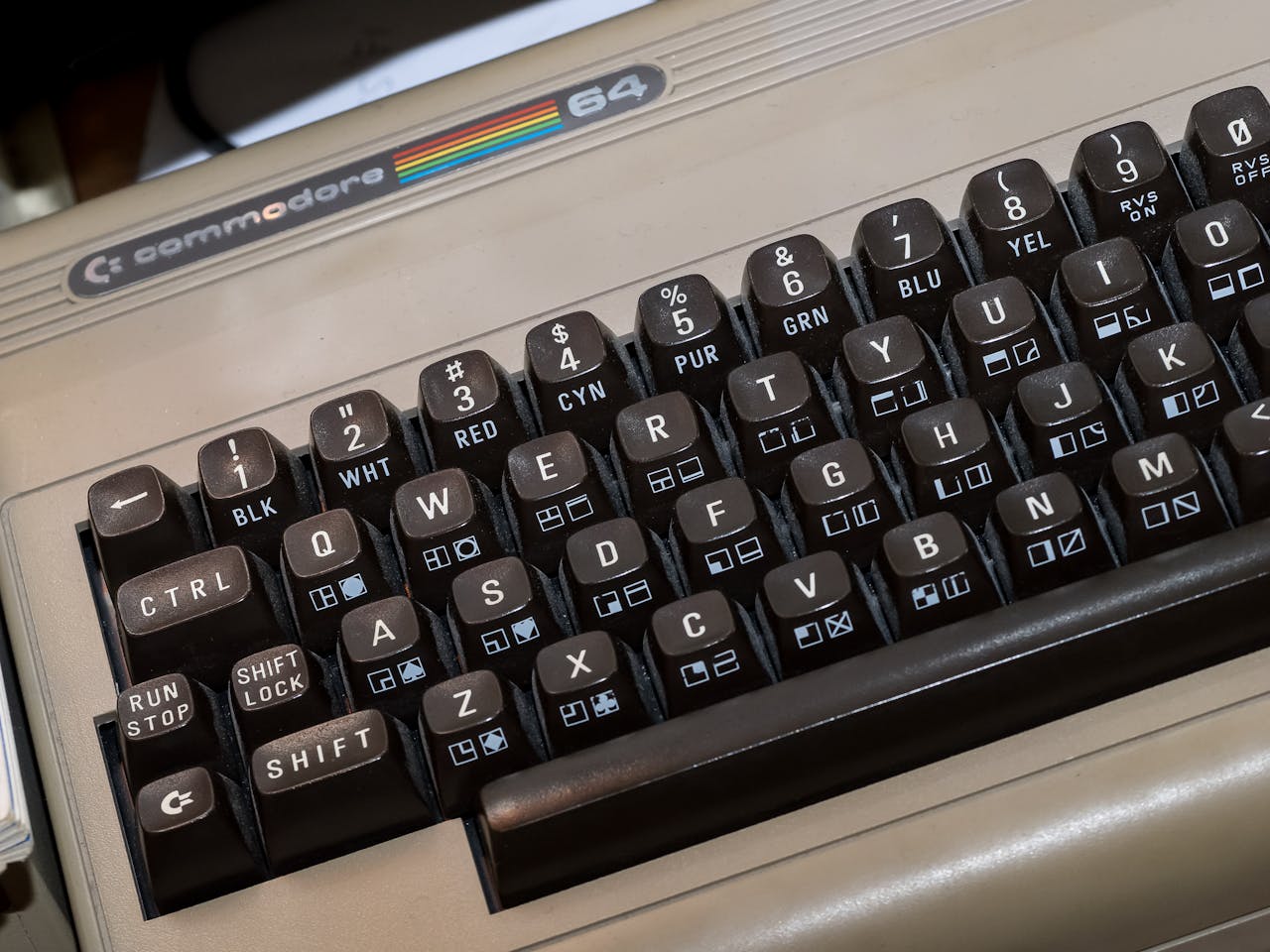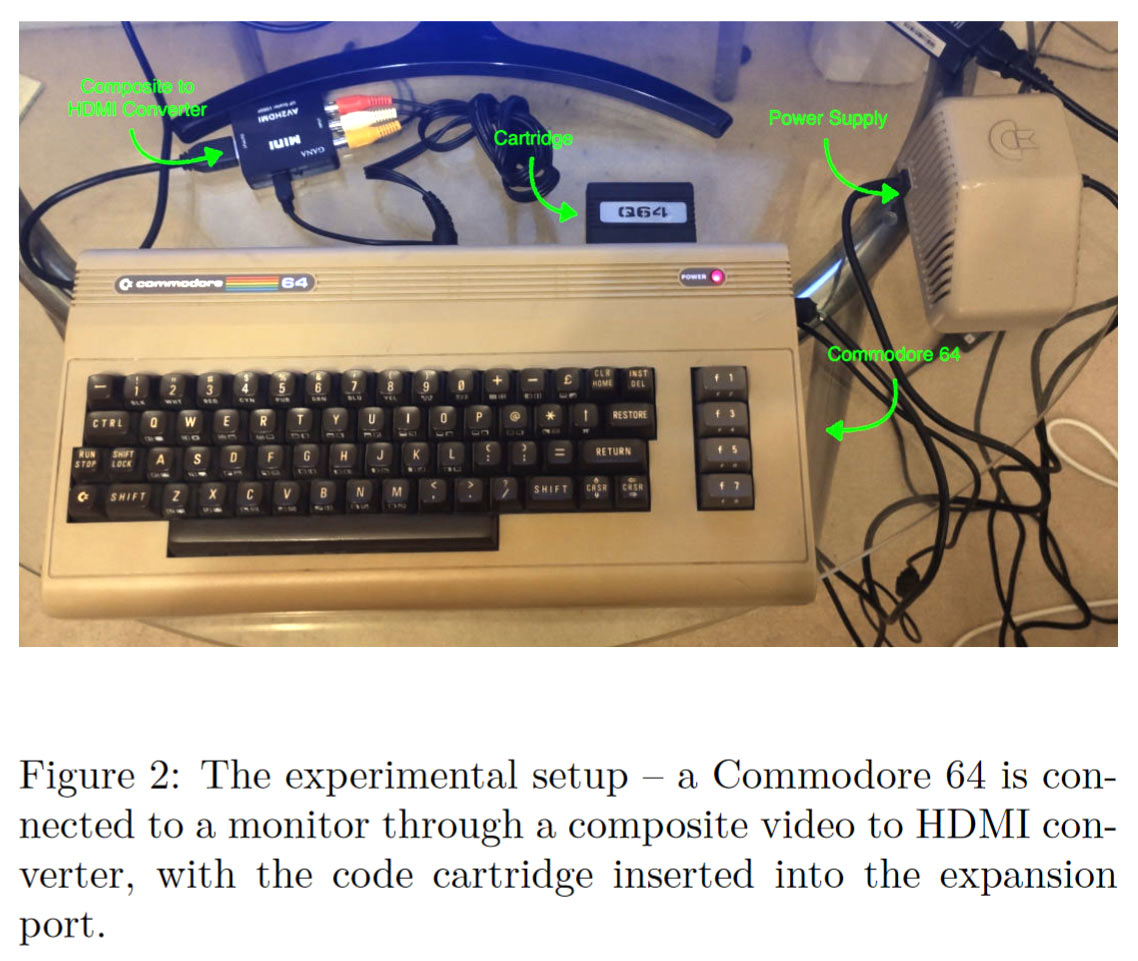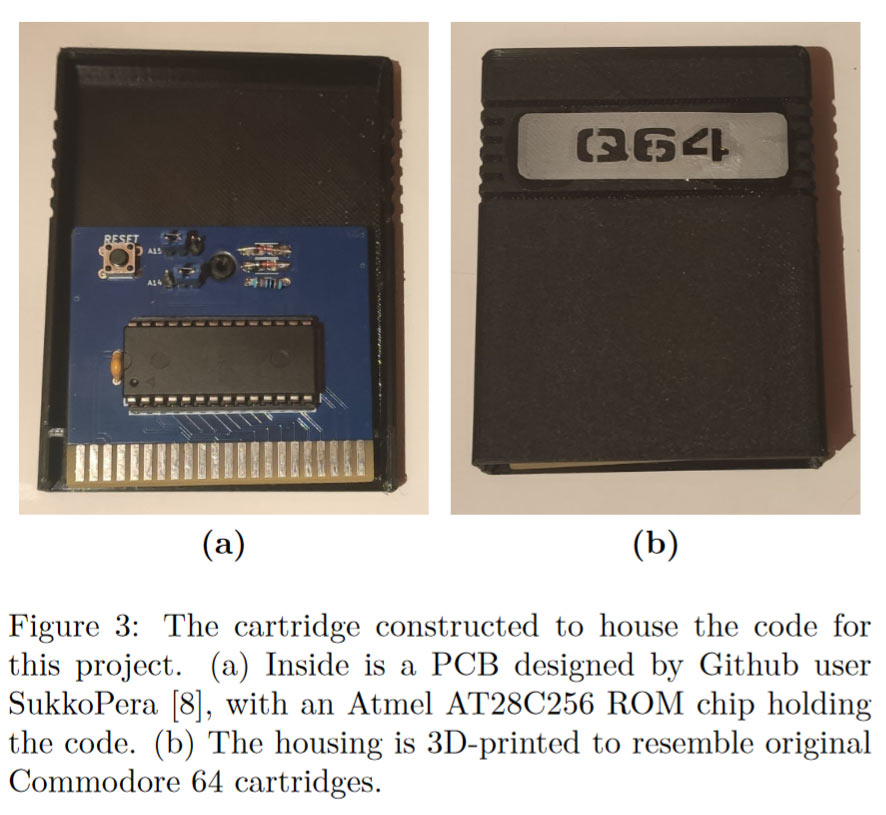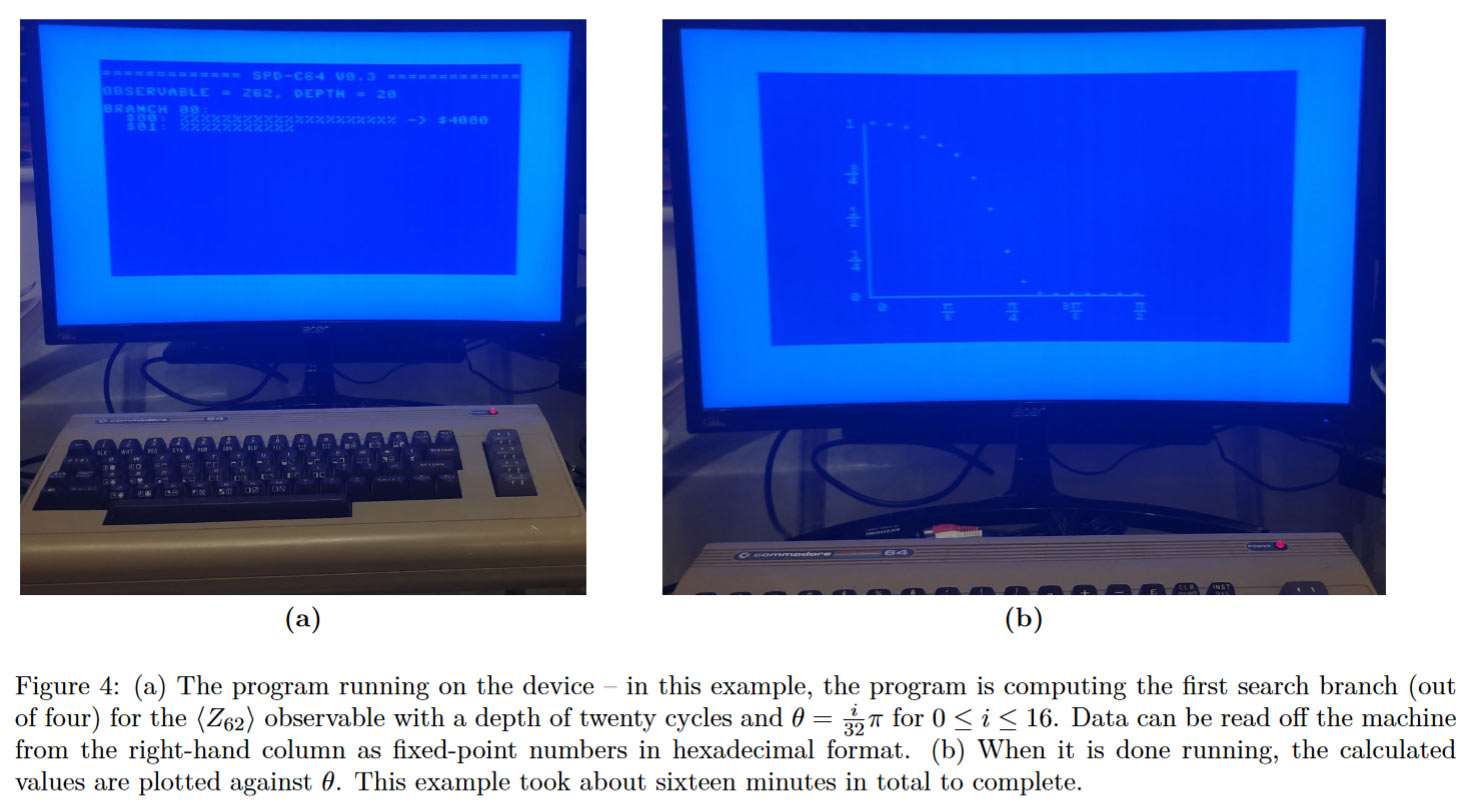Commodore 64 claimed to outperform IBM's quantum system — sarcastic researchers say 1 MHz computer is faster, more efficient, and decently accurate

A paper released during the SIGBOVIK 2024 conference details an attempt to simulate the IBM ‘quantum utility’ experiment on a Commodore 64. The idea might seem preposterous - pitting a 40-year-old home computer against a device powered by 127-Qubit ‘Eagle’ quantum processing unit (QPU). However, the anonymous researcher(s) conclude that the ‘Qommodore 64’ performed faster, and more efficiently, than IBM’s pride-and-joy, while being “decently accurate on this problem.”
At the beginning of the paper, the researchers admit that their ‘Qommodore 64’ project is “a joke,” but, sadly for IBM, its proof of quantum utility was also built upon shaky foundations, and the Qommodore 64 team came up with some convincing-looking benchmarks. There was some controversy about IBM’s claims at the time, and we are reminded it took just five days for the quantum experiment to be simulated on an ordinary MacBook M1 Pro laptop. The jokey Quantum Disadvantage paper (PDF link, headlining section starts at page 199) ports this experiment to a machine packing the far more humble MOS Technology 6510 processor.



To get deep into the weeds with the quantum theory and math behind the quantum utility experiment, please follow the above PDF link. However, to summarize, the C64-based experiment uses the sparse Pauli dynamics technique developed by Beguŝić, Hejazi, and Chan to approximate the behavior of ferromagnetic materials. Famously, IBM claimed such calculations were “too difficult to perform on a classical computer to an acceptable accuracy, using the leading approximation techniques,” recalls the paper. Not quite, and as already mentioned above, an ordinary laptop can obtain similar results.
The anonymous C64 user(s) provide some interesting details of their quantum-defeating feat. Their aggressively truncated and shallow depth-first search model used just 15kB of the spacious 64kB available on the iconic Commodore machine. Meanwhile, the final code consisted of about 2,500 lines of 6502 assembly, stored on a cartridge that fitted in the C64’s expansion port. This code was handled by the mighty 1 MHz 8-bit MOS 6510 CPU. The C64 took approx 4 minutes per data point. (Testing the same code on a modern laptop achieved roughly 800μs per data point.)
In conclusion, the researcher(s) asserts that the ‘Qommodore 64’ is “faster than the quantum device datapoint-for-datapoint… it is much more energy efficient… and it is decently accurate on this problem.” On the topic of how applicable this research is to other quantum problems, it is snarkily suggested that “it probably won’t work on almost any other problem (but then again, neither do quantum computers right now).” Overall, it is difficult to know whether the results are entirely genuine, though a lot of detail is provided and the linked research references in the paper seem genuine.
We know many readers are retro computing enthusiasts, as well as DIYers and makers. So it is good to know that the author(s) of this paper say that they will provide source code to allow others to replicate their results. However, source code will only be supplied in one of three formats, they say: “a copy handwritten on papyrus, a slide-show of blurry screenshots recorded on a VHS tape, or that I dictate it to you personally over the phone.” So please add an extra pinch of salt to this story for that.
Get Tom's Hardware's best news and in-depth reviews, straight to your inbox.

Mark Tyson is a news editor at Tom's Hardware. He enjoys covering the full breadth of PC tech; from business and semiconductor design to products approaching the edge of reason.
-
vanadiel007 The Commodore 64, good times. Together with the Amiga 500 hands down my 2 most favorite computers. RIP guys.Reply -
kyzarvs Reply
It took a very long time for true multi-tasking to become as efficient as the Amiga chipset - the design was superb, such a shame there was no investment.vanadiel007 said:The Commodore 64, good times. Together with the Amiga 500 hands down my 2 most favorite computers. RIP guys. -
Blastomonas Replykyzarvs said:It took a very long time for true multi-tasking to become as efficient as the Amiga chipset - the design was superb, such a shame there was no investment.
Agreed. I learned that one of the death knells for the Amiga was that they refused to adopt MS office. They wanted to develop their own.
Anyway. Fun article. Still waiting on that real quantum breakthrough! -
Findecanor BTW. The top image in the article is a 3D render of the "Commodore 64x" which is a mITX PC case with mechanical keyboard, merely shaped like a Commodore 64 breadbin. The keyboard layout is different, adapted for a PC.Reply
Preemptive multitasking did not depend on the custom chipset: you'd need only a hardware timer that could trigger an interrupt, and in the Amiga: that was in one of the CIA chips. Those were in essence variants of the ones in the C64.kyzarvs said:It took a very long time for true multi-tasking to become as efficient as the Amiga chipset
It was otherwise all software: Carl Sassenrath's "Exec" handled interrupts, task scheduling and message passing and the framework that allowed dynamically loaded libraries and device drivers.
R.J. Mical's "Intuition" had the windows, menus and "gadgets" ("controls"/"widgets") run in Intuition's task instead of requiring message round-trips to the application for every user interaction like on other systems: This made using multiple tasks very responsive, independent of how slow the applications actually were.
That the Blitter was used to move windows around and scroll window contents helped of course, but was not critical.
You mean: Microsoft wanted to develop their own windowing system? They were apparently busy with Windows 1.0 when the Amiga launched, yes. It was not the only or even the first windowing system on top of MS-DOS at the time though, so I'd think that Microsoft regarded those as more close competitors.Blastomonas said:Agreed. I learned that one of the death knells for the Amiga was that they refused to adopt MS office. They wanted to develop their own.
The general belief back in the day was that Microsoft would have ported Microsoft Office to the Amiga had the Amiga platform appeared to be viable in the long run, with good sales figures also in the US and a strong company behind it that believed in the platform, but...
AFAIK, there were some pretty viable word processors and spreadsheets for the Amiga.
Microsoft Office did not become dominant even on the PC until the mid-90's when Commodore went bankrupt. I'd think that in about '93, the dominant PC word processor was still WordPerfect: both in DOS and MS Windows 3.1, and the dominant spreadsheet was Lotus-1-2-3.
BTW. I believe the DOS version of WordPerfect was even ported to Amiga: but a WYSIWYG version never was. -
Amdlova Feeling nostalgic these days... windows 95, commodore computers... just brought the 1999 silver game on steam... man need to get a 4:3 screen to fulfill the vibeReply -
niceguy1 the ides of april. i had a vic 20 with 4k of ram (i believe). cartridge side scrolling games and basic programming - i also had a 300 baud modem. yeah im old.Reply -
SunMaster ReplyBlastomonas said:Agreed. I learned that one of the death knells for the Amiga was that they refused to adopt MS office. They wanted to develop their own.
I think the main problem was Commodore, the management. And qc issues.
But the Amiga was an amazing design, I loved both my A1000 and A2000. -
35below0 Windows still hasn't come round to the idea of hiding files the user doesn't ever want to interact with. Or the idea of non-uniform icon sizes.Reply
They did try the idea of applying wallpapers to individual drawers folders... It was not a pretty sight. -
Sluggotg The C64 was my first computer. Then the Amigas came out. I jumped to the A2000. Loved Commodore but it was ran into the ground by Irving Gould. He owned controlling interest in the company and kicked out Jack Tramiel. It was sad to see Commodore go away.Reply
Obviously I still have C64s/Amigas and many other models of old computers. Computing in the 80s was very exciting. It still is but in a different way.